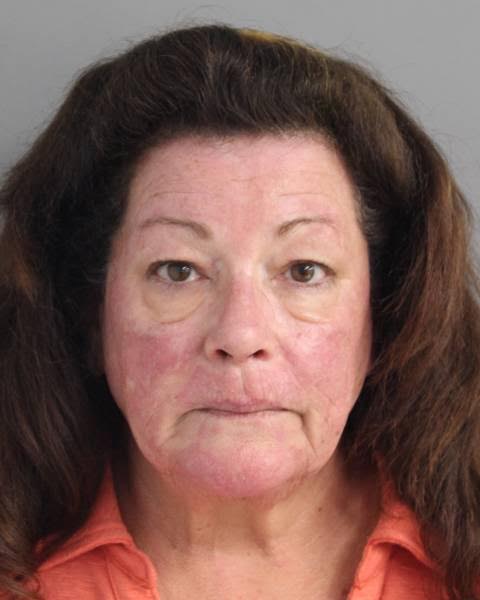Exploring the potential for using hydrogen fuel
Two weeks ago, on June 28, Port Jefferson Village Mayor Lauren Sheprow, then-trustee-elect Xena Ugrinsky and I visited the Advanced Energy Research & Technology Center at Stony Brook University. The AET is doing cutting-edge research on future hydrogen technologies and other projects that create businesses on Long Island. We were welcomed by David Hamilton and Kathleen Ferrell.
The connections with Stony Brook University departments, New York technology leaders, researchers and public agencies that were made in this short visit were quite extraordinary and many appointments were made for future discussions.
The mayor knew Hamilton and Ferrell professionally. Our visit was designed to dovetail with the efforts of the Port Jefferson Power Plant Working Group that Ugrinsky chairs. The PWG is exploring the potential for repowering our base load plants using hydrogen fuel and we will be exploring this possibility with Haiyan Sun when she is scheduled to tour our plant on a trip from Albany July 10.
Sun heads NYSERDA’s (the state’s Energy Research & Development Authority) hydrogen and renewables division and is responsible for evaluating grants and New York State priorities for this fast-evolving future technology. I am proud to be a part of this village’s forward-thinking and well-connected leadership. Port Jefferson is fortunate to be able to have people with these kinds of professional experience and networks working for its residents.
Bruce Miller
Port Jefferson
Comsewogue Community Garden is a special place
My name is Danny, and I am a Life Scout working on the Communication merit badge. I recently started work on my Eagle Scout project at the Comsewogue Community Garden on Terryville Road in Port Jefferson Station. I am replacing the current garden shed with a new one.
I am writing because I would like to share how impressed I am with the garden and the amount of work that volunteers have put into making the garden so beautiful and welcoming. This includes growing fresh vegetables and a pollinator garden. More recently a Girl Scout troop started a sensory garden.
This is a special place in the community and I think more people should know about it. I am hoping that students can take field trips to visit the garden and community members can take advantage of this beautiful space.
Daniel Cappiello
Troop 354 Port Jefferson Station
Happy 60th birthday to public transportation on Long Island
This July marks the 60th anniversary of federal government support for public transportation. The success of public transportation can be traced back to one of the late President Lyndon Johnson’s (D) greatest accomplishments which continues benefiting many Americans today. On July 9, 1964, he signed the Urban Mass Transportation Act of 1964 into law. Subsequently this has resulted in the investment over time of billions of dollars into public transportation.
Millions of Americans today on a daily basis utilize various public transportation alternatives. They include local and express bus, ferry, jitney, light rail, subway and commuter rail services. All of these systems use less fuel and move far more people than conventional single occupancy vehicles. Most of these systems are funded with your tax dollars thanks to Johnson.
Depending upon where you live, consider the public transportation alternative. Try riding a local or express bus, para transit or commuter van, ferry, light rail, commuter rail or subway.
There is MTA LIRR, NYC Transit bus and subway, Suffolk County Transit Bus, Huntington Area Rapid Transit (HART) Bus and Nassau Inter-County Express (NICE) Bus.
By using MTA Metro or OMNY cards, there are free transfers between the subway and bus. This has eliminated the old two-fare zones making public transportation an even better bargain. Purchasing a monthly LIRR or MTA subway/bus pass reduces the cost per ride and provides virtually unlimited trips. In many cases, employers can offer transit checks which help subsidize a portion of the costs. Utilize this and reap the benefits. It supports a cleaner environment.
Many employers now allow employees to telecommute and work from home. Others use alternative work schedules which afford staff the ability to avoid rush-hour gridlock. This saves travel time and can improve mileage per gallon. Join a car or van pool to share the costs of commuting.
The ability to travel from home to workplace, school, shopping, entertainment, medical, library, etc., is a factor when moving to a new neighborhood. Economically successful communities are not 100% dependent on automobiles as the sole means of mobility. Seniors, students, low and middle income people need these transportation alternatives. Investment in public transportation today contributes to economic growth, employment and a stronger economy. Dollar for dollar, it is one of the best investments we can make.
What better way to honor the late President Johnson and all that has been achieved these past 60 years in public transportation by continuing funding the federal Highway Trust Fund and Mass Transit Account.
Larry Penner
Great Neck




























